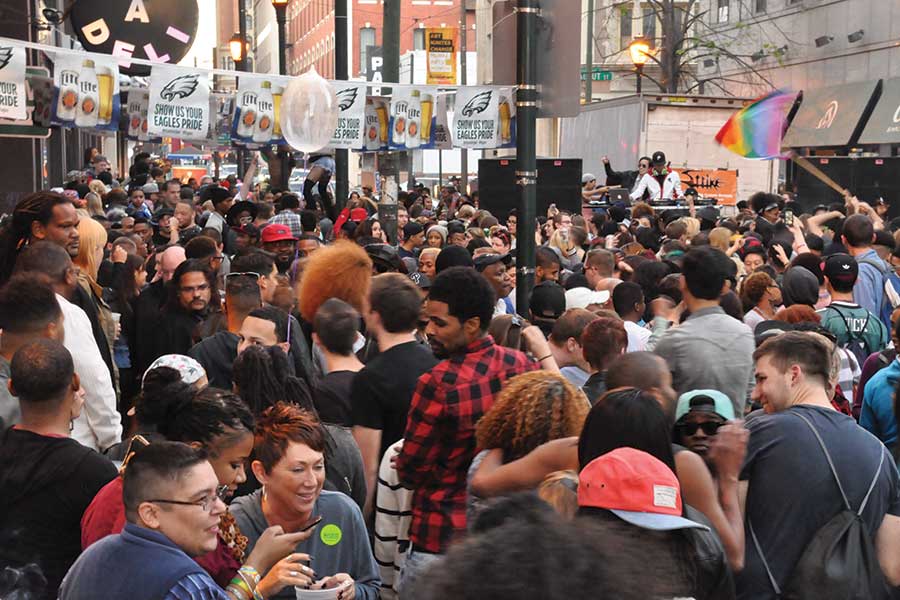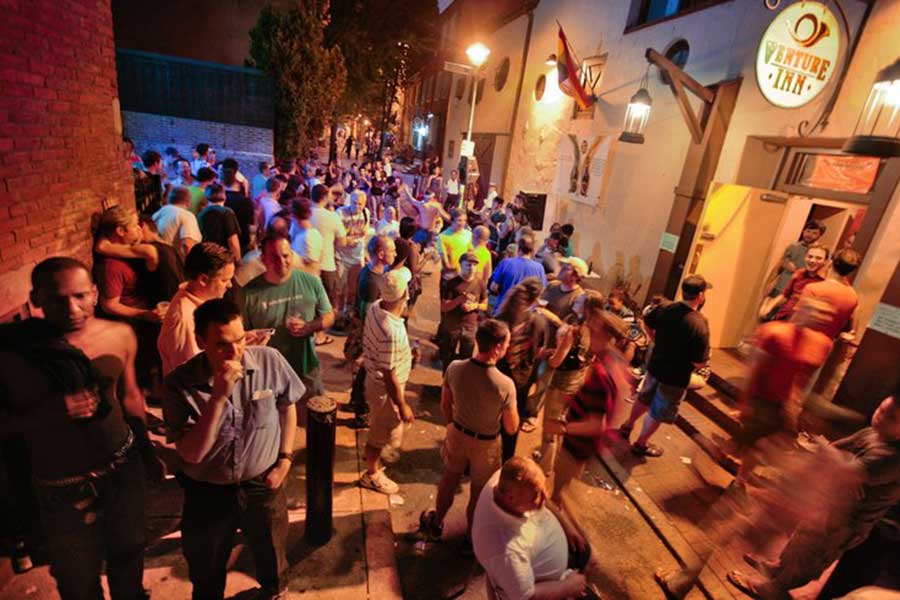
The Gayborhood has seen many changes and evolutions over the years, which begs the questions: Where is the Gayborhood right now and where is it going in the future?
For some bar owners and operators working in the Gayborhood, the area’s future looks bright, even with the uncertainties of a frequently changing neighborhood.
“It’s gotten better,” Stephen Carlino, owner of U Bar and Tavern on Camac, said about business in the Gayborhood. “Whether that has anything to do with any changes in the gay community, I don’t know. The neighborhood is getting better but I hear more and more people talk about moving out because it’s too expensive.”
Tabu co-owner Jeff Sotland added that, when his establishment opened, he sought advice from seasoned bar owner and Woody’s founder Bill Wood.
“When we opened, the first thing I did was sit down with Bill Wood and say, ‘What do you think? We’re obviously not competing with you. We’re looking at something totally different,’” Sotland said. “And his first thing was, ‘Don’t open a gay bar. You’re going to die. It’s going to be great on a Friday and Saturday night, but you’re going to die during the week.’ And he was 100-percent correct.”
Sotland said the clientele at gay bars has shifted in the past few decades, as have the ways LGBT people socialize, which has prompted venues to shift their focus to keep up with that change.
“We bring in probably the most diverse crowd in the neighborhood every night of the week. There’s a total change in the neighborhood from 20 years ago,” he said. “There’s also a change in behaviors from 20 years ago. You don’t have to go to the bars to find out where your friends are. You text, you message, you do all these crazy things. We’ve seen a large shift in trans folk who come out and engage in performance art. They’re getting involved in things that are going on. There’s not just an insular focus on the community anymore, at least in our space. We have a very diverse crowd. Any drag show we have draws 30-50 percent allies, not just LGBT folks.”
Sotland added that these changes have even affected the Gayborhood’s tastes in adult beverages.
“When we opened, vodka and three beers ruled the day,” he said. “That’s out the window now. It’s brown liquors and the whiskeys. People aren’t drinking all these light beers. They’re drinking IPAs and stouts that you didn’t find in the neighborhood 15 years ago. It’s a struggle for the breweries and the distributors because they haven’t been able to keep up with the change.”
Some say it is entirely possible that, because of social changes and gentrification, the Gayborhood as we know it might not exist in 10 or 20 years.
“I remember reading an article many years ago about how in 10 years’ time, all the gay bars will disappear,” Carlino said. “And that was more than 10 years ago. I don’t see that happening. Certainly we have lost three gay bars in the last two years in Philadelphia: Sister’s, The Westbury and now Venture Inn, not because people weren’t going there but the owners decided to move on or because the city or the landlord shut the building down. I think there’s always going to be a desire for the young gay community to go out and hang out with their friends, who are often going to be gay or lesbian. But more and more, straight people are coming in and being welcomed into the bars.”
“It’s never going to go away entirely but it is going to cull the herd,” Sotland said about the Gayborhood. “The low-hanging fruit is going to go away. Woody’s will always be there. Knock will always be there. I hope that Tabu will always be there. But The Westbury and Venture are not there anymore. All cities are going through this and it’s a big problem. They’re trying to do away with dance clubs. I don’t think you’re going to see an expansion. You’re going to see more of an integration. But there’s the big question of, Do you need it anymore, because everybody is as comfortable as they can be in any of these locations that are there already? Are more house parties so the big-event nights aren’t as big as they used to be. But people are coming out more. It’s a very diverse area.”

